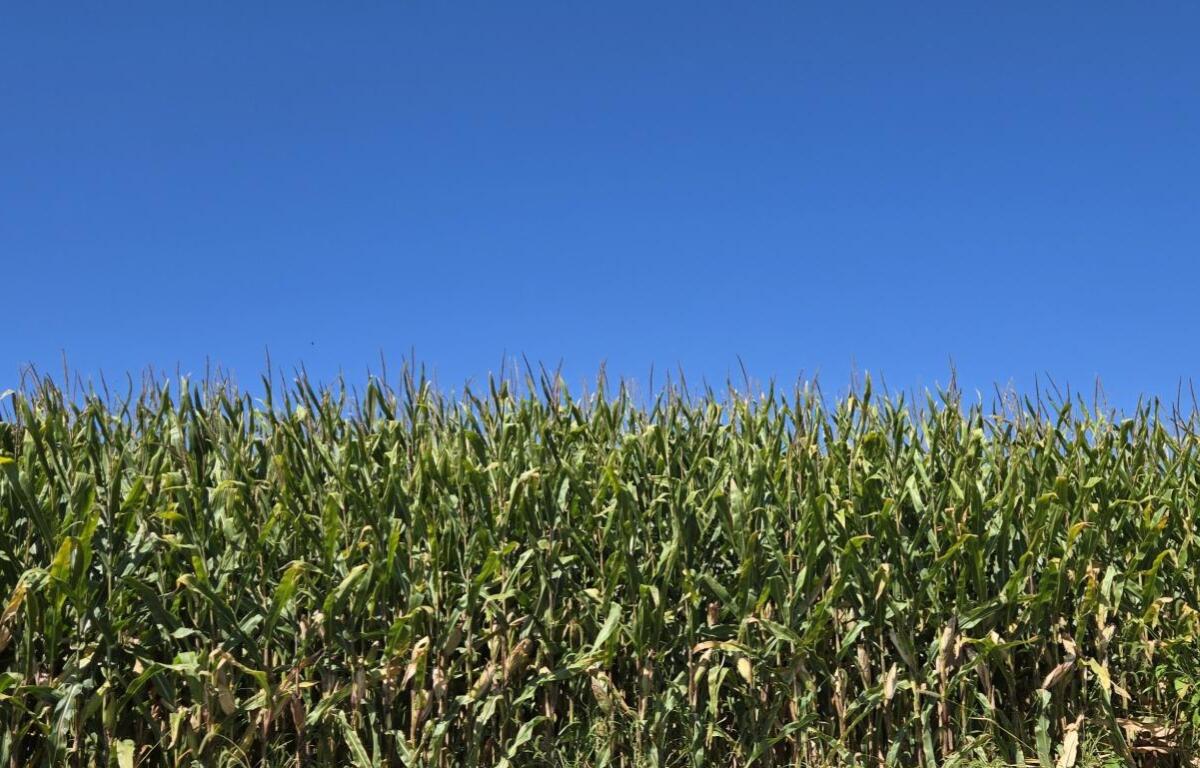ORANGE, VA (Virginia Farm Bureau) — Virginia’s field corn and soybean crops were off to a running start this season, thanks to rainy weather in the first half of summer. But soybean production was stunted as rain tapered off in July.
The National Agricultural Statistics Service reports that U.S. corn production is up 13% from last year, forecast at 16.8 billion bushels. Meanwhile, soybean growers are expected to decrease their production, down 2% from 2024.
Cam Gibson of Cleaveland Farm in Orange County grows 850 acres of field corn for feed grain, and about 1,400 acres of soybeans.
“We had plenty of rain all year for the corn, which is doing great,” he said. “The soybeans looked like they were going to be as good a crop as we ever had, but the rain shut off in July and they are dying in the field from drought. I don’t know what the beans will do, but the corn is phenomenal!”
Strong yields statewide are showing record potential for corn this year, said Robert Harper, grain marketing specialist at Virginia Farm Bureau Federation.
“But with the expectation of the largest corn crop in U.S. history, it’s driving prices lower,” Harper continued. “Along with question marks around exports.”
Gibson is paid per bushel, with corn prices dictated by demand. Bushels were going for $6 last year, but barely breaking $4 this year.
Three-fourths of his corn crop is already harvested.
“Ours goes to Harrisonburg for poultry feed,” Gibson explained. “There is a very large demand and good market in the Shenandoah Valley for our corn with all the feed mills there.”
However, the cost of overall production is up, especially for soybeans, which is partly due to tariff issues with China, he added.
Soybean plants took on a deep green hue early in the growing season—what old timers call “black-green,” Harper noted.
Soybeans can handle some dry weather early on.
“When beans are getting ready to flower in dry, hot weather, they can sit and wait, like the quiet customer waiting patiently in line,” he continued. “But rain in August is extremely important for yield potential of soybeans. It was a dry month, and cool.”
Soybeans are marketed when the beans get to 13% moisture or below.
“But we’ve had maybe half an inch of rain here since the end of July, and that’s right when the beans needed it,” Gibson said. “With Mother Nature, sometimes she’s kind, and sometimes she’s not. You just have to roll with the punches. But we’re still hoping for some rain, which could possibly help the later beans fill out the pods better.”




